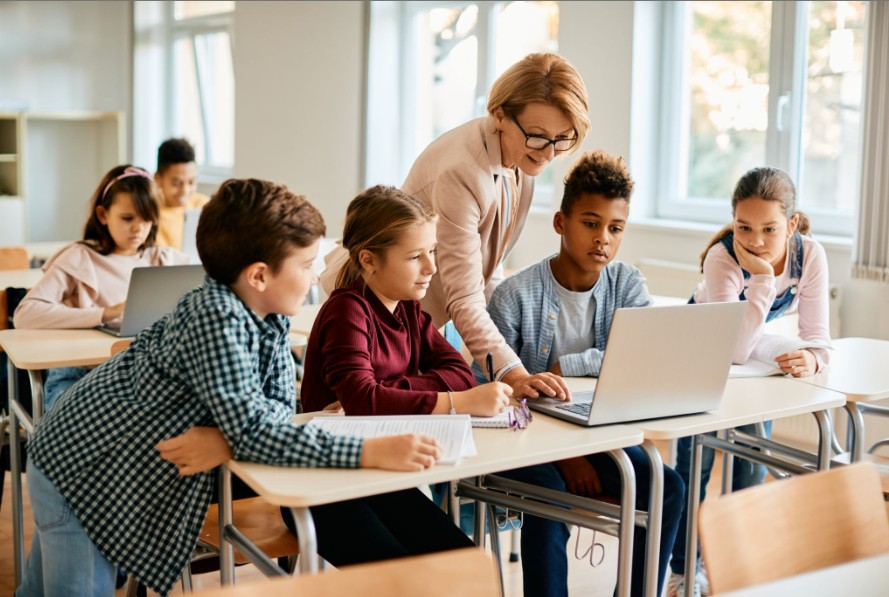

Why do lions roar? How do gorillas care for their young? How are penguins adapted to cold climates? These questions show the natural curiosity that drives elementary STEM learning. In many classrooms, teachers don't have direct access to zookeepers, biologists, or wildlife researchers to answer these questions—but that's changing. Virtual connections with zoo experts are bringing professional voices directly into classrooms, transforming how students learn about animals and science.
When students connect with a zoo expert, they're not just consuming information—they're having a real conversation with someone who works with animals every day. These interactions create something textbooks and videos simply can't match: the chance to ask follow-up questions, hear personal stories from the field, and understand what it's really like to study and care for wildlife.
These expert connections encourage students to ask questions and make careful observations. They experience authentic, real-world learning that supports science standards and STEM lesson plans. Through these interactions, teachers can create classroom environments where students act as investigators, developing understanding and skills—all guided by professionals who bring specialized knowledge.

There are three main ways to bring zoo experts into your classroom:
Platforms like Zoolife for Educators
Direct Virtual Visits with Zoos
Educational Videos Produced by Zoos on YouTube
The magic of these interactions happens in the conversation itself. During a typical expert session, students might observe live animals while a zookeeper explains behaviors in real time, providing context and answering questions as they arise. They can ask about daily care routines, animal personalities, conservation challenges, and what sparked the expert's interest in their career.
These conversations naturally support multiple areas of learning. Students practice scientific observation and inquiry, asking questions and making predictions about animal behavior. They work with real-world data as experts share information about animal measurements, populations, and research findings. They develop literacy skills through preparation (writing questions beforehand) and follow-up (summarizing what they learned). They even encounter math concepts when experts discuss animal sizes, ages, feeding amounts, or population numbers.
Most importantly, students see science as something done by real people, not just facts in a textbook. They learn that scientists are curious, observant, and passionate about their work—qualities students can develop themselves.
Expert interactions enhance STEM learning in concrete ways. In science, students don't just learn about adaptations or ecosystems—they hear from someone who observes these concepts daily. A zookeeper can explain how penguins' feathers create waterproofing, or how gorilla family structures work, bringing abstract concepts to life.
The technology component becomes clear in the connection itself. Students experience how digital tools enable collaboration and learning across distances. Teachers can extend this by discussing how researchers use technology to study animals in the wild, or how zoos use cameras and tracking devices for animal care.
Engineering thinking emerges when experts share how they design enrichment activities or habitat features. Students might be inspired to design their own enrichment devices or habitat models, applying what they've learned from professionals who solve these problems daily.
Mathematics appears naturally in the conversation. Experts share data about animal weights, ages, feeding schedules, or population numbers. Students can graph this information, compare measurements, or analyze patterns—using real-world data that matters.
Connecting with zoo experts does something textbooks can't—it makes conservation personal. When students hear a zookeeper talk about an endangered species they care for, or a researcher describe their fieldwork protecting habitats, conservation becomes more than an abstract concept. It becomes something real people are working on, something students themselves might contribute to someday.
These interactions promote empathy as students learn about individual animal personalities and the dedication required to care for them. They develop patience through observation and an awareness of humanity's impact on wildlife. Students begin to see themselves as part of a larger ecosystem, capable of making choices that matter.
The good news is that teachers don't need zoo expertise to facilitate powerful learning experiences. Your role is to prepare students with good questions, guide the conversation to match your curriculum, and help students process what they learn afterward.
Before the session, work with students to develop thoughtful questions. During the interaction, encourage observation and note-taking. Afterward, create opportunities for students to reflect through journaling, discussions, or creative projects. The expert provides specialized knowledge while you provide the teaching framework that transforms the experience into lasting learning.
The advantages of connecting students with zoo experts extend across every aspect of teaching:
Whether you use a platform like zoolife.tv/educators or connect directly with a zoo's education department, these resources make it possible to bring expert voices into your classroom without leaving school.
Ready to connect your students with zoo experts? Start by exploring platforms like zoolife.tv that offer expert sessions and educational resources. You can also contact zoos directly—many have education coordinators who can discuss virtual visit options. Look for zoos that offer programs aligned with your grade level and curriculum needs.
When you bring a zoo expert into your classroom, you're not just teaching about animals—you're showing students what it means to be curious, observant, and engaged with the natural world. You're connecting them with people who turned their childhood wonder into meaningful careers. And you're showing that learning doesn't stop at the classroom door—it extends to researchers, caregivers, and scientists working around the world.